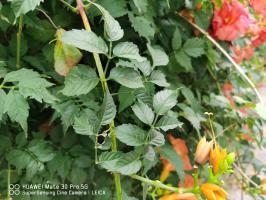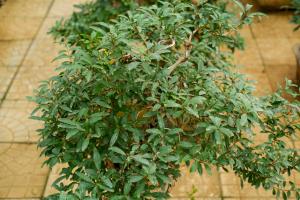How to Get Rid of Earwigs in Plant Pots
Earwigs are a common pest that can cause damage to plants, including those in pots. These small insects are attracted to moist soil, and plant pots provide the perfect environment for them to thrive. If you notice that your plants are being damaged by earwigs, here are some tips on how to get rid of them:
Clean Your Pot
The first step in getting rid of earwigs is to clean your plant pot. Earwigs are attracted to moist soil and plant debris, so make sure to remove any dead leaves, twigs, or flowers from the pot. Once the pot is clean, use a mixture of soap and water to wash the inside and outside of the pot. This will help to kill any earwigs that may be hiding in the pot.
Use Diatomaceous Earth
Diatomaceous earth is a natural insecticide that can be used to get rid of earwigs in plant pots. This substance is made from the fossilized remains of diatoms, which are small aquatic organisms. When diatomaceous earth comes into contact with an earwig, it will puncture the insect's exoskeleton and cause it to dehydrate and die.
To use diatomaceous earth, simply sprinkle a small amount on the soil in your plant pot. Make sure to wear gloves, as diatomaceous earth can be abrasive to the skin. Reapply the diatomaceous earth every few days, or after heavy rain, to ensure that the earwigs are eliminated.
Set Up Traps
Another effective way to get rid of earwigs in plant pots is to set up traps. You can purchase earwig traps at your local garden center or make your own. To make a homemade trap, use a shallow container, such as a yogurt cup, and fill it with a mixture of soy sauce and vegetable oil. Place the trap in the plant pot with the open end facing up. Earwigs will be attracted to the scent of the soy sauce and will crawl into the trap, where they will drown in the oil.
Keep Your Plant Pot Dry
One of the best ways to prevent earwigs from infesting your plant pots is to keep the soil dry. Earwigs are attracted to moist environments, so if the soil in your plant pot is always wet, it will be a breeding ground for these insects. Make sure to water your plants only when necessary, and avoid overwatering. You can also add a layer of sand or gravel to the top of the soil to help it dry out more quickly.
Conclusion
Earwigs can be a nuisance to plants in pots, but there are many ways to get rid of them. By following these tips, you can keep your plant pots free from earwigs and ensure that your plants remain healthy and thriving. Remember to keep your pots clean and dry, use natural insecticides like diatomaceous earth, and set up traps to catch any remaining earwigs. With a little effort, you can keep your plants and pots looking beautiful and pest-free.

 how many times do yo...
how many times do yo... how many planted tre...
how many planted tre... how many pine trees ...
how many pine trees ... how many pecan trees...
how many pecan trees... how many plants comp...
how many plants comp... how many plants can ...
how many plants can ... how many plants and ...
how many plants and ... how many pepper plan...
how many pepper plan...





























